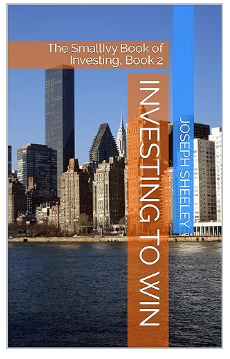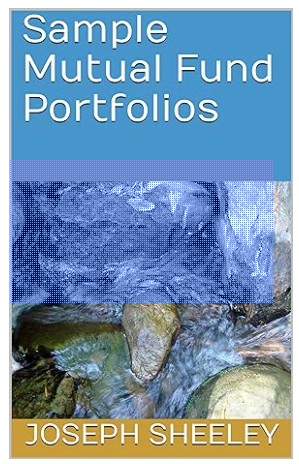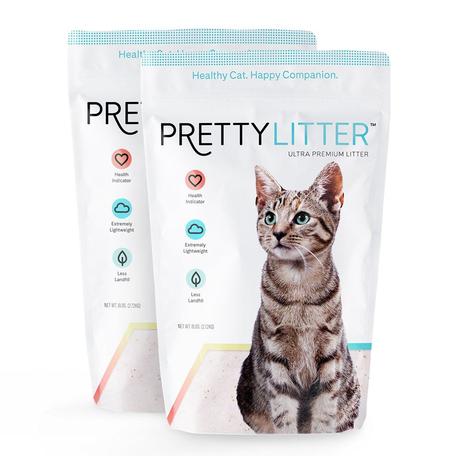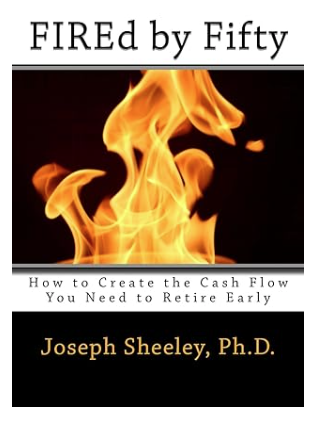
Photo by fauxels on Pexels.com
" data-orig-size="1880,1255" data-image-title="photo of people doing handshakes" data-orig-file="https://smallivy.com/wp-content/uploads/2024/06/pexels-photo-3183197.jpeg" data-image-description="" data-image-meta="{"aperture":"0","credit":"","camera":"","caption":"","created_timestamp":"0","copyright":"","focal_length":"0","iso":"0","shutter_speed":"0","title":"","orientation":"0"}" width="1880" data-medium-file="https://smallivy.com/wp-content/uploads/2024/06/pexels-photo-3183197.jpeg?w=300" data-permalink="https://smallivy.com/2024/06/09/accounts-you-need-when-adulting/pexels-photo-3183197/" alt="" height="1255" class="wp-image-24368" data-large-file="https://smallivy.com/wp-content/uploads/2024/06/pexels-photo-3183197.jpeg?w=723" />Photo by fauxels on Pexels.comSo, you’ve turned 18, gotten an apartment, and are ready to start life on your own. You feel great!
Or maybe you feel scared. You have bills to pay and things you need to buy. You aren’t sure how you will take care of it all. In this post we’ll talk about the accounts you should have to make your life easier and help you take care of everything finance. Get set up right and the rest is easy.
Want to learn the secrets to investing and really turbocharge your returns? Check out the second book in The Small Investor series, Investing to Win. This book presents 40 years of investing experience. Someone starting with zero knowledge of investing and the stock market could take this book and learn all that they needed to invest and do well. It would also be useful to someone who has invested and traded stocks for a while but who is really not getting the kind of returns desired.

(Note, this site contains affiliate links. As an Amazon Associate I earn from qualifying purchases. When you click on an affiliate link and buy something, The Small Investor will get a small commission for the referral. You are charged nothing extra for the purchase. This helps keep The Small Investor going and free. I don’t recommend any products I do not fully support. If you would like to help but don’t see anything you need, feel free to visit Amazon through this link and buy whatever you wish. The Small Investor will get a small commission when you do, again at no cost to you.)
The Checking Account
The account that you need the most and that you will use most often is the checking account. This is an account designed to allow you to deposit and withdrawal money quickly and easily. In the past you would withdraw money and pay people with literal paper checks, but today many people find they almost never actually write checks. (This is good because each check typically costs on the order of a quarter to fifty cents to print, so being able to spend money using debit cards and direct transfers will save you probably a couple of hundred dollars per year.) Still, you should have a few paper checks around for the rare occasion when you need one. Some places are also starting to charge a fee for using credit cards since they are changed a fee by the credit card companies, so you can save money by using checks (or debit cards, sometimes).
Speaking of debit cards, these are cards connected to your checking account that allow you to take money out directly. When you use your debit card it is just like you are writing a check but you don’t need to actually write a check. This means that the money comes out of your account right away. With a credit card, you are putting charges on a tab and then need to pay them off later so no money comes out of your accounts until you make the payment. You use debit cards just like a credit card except that you may need to enter a Personal Identification Number (PIN) into a key pad when you use your debit card. (Do not tell anyone this PIN or they may be able to use your debit card to buy things themselves.) If you have the option, it is safer to ask the merchant to run your debit card like a credit card (or choose “debit” on the screen) since this offers you protections against fraud.
It is important to make sure you keep track of how much money you have in your checking account. When writing checks, there is a “check register” where you write the date, amount, and payee of each check, then track how much is left in the account. When the bank statement comes, you can check it against the register and fix any mistakes you made (or, rarely, that the bank made). With debit cards it gets harder to track. You could carry the register with you and record your debit card transactions, but most banks today have apps and websites that let you check your account balances and transactions near real-time. Be cautions here, however, since it can take a while for some transactions to show up (especially deposits, which may take a few days to clear and make the funds available) and if you have written any physical checks those will not show up until the people you gave them to cash the checks.
Overdrawing your account (writing checks for more than you have in the account) isn’t the end of the world, but it will cost you money. Your bank will often charge you a fee for each check that overdraws of $20 to $40. Many of them purposely cash the checks in the order that maximizes fees (cashing large checks before small). The merchant who sees a check bounce (overdraw) will also likely be unhappy and could charge you a fee as well. In extreme cases where you write checks that you know (or should know) will cause an overdraft, this can be considered fraud and could be prosecuted as a crime. Note this is purposely writing checks that you know will bounce, not simple mistakes.
To avoid overdrawing your checking account, it is a good idea to keep extra cash in the account beyond what you normally spend in a month. Many banks also offer a service called “overdraft protection” where your saving and checking accounts are tied and money is automatically transferred from savings to checking if needed to cover checks over the account balance. We’ll talk about savings accounts next.
(If you’d like to learn more about how to decide how much you should put in different types of assets, Sample Mutual Fund Portfolios gives lots of information and examples of how to make allocations for all sorts of different goals, including retirement.)

Savings Accounts and Money Markets
Savings accounts and money markets are very similar in function and use, so we’ll discuss them together. A savings account is an account meant for doing just what it says: saving money. Typically they pay higher interest rates than checking accounts (which may actually charge a fee and not pay any interest). They also have restrictions on how many times you can withdraw money each month before they start to charge a fee. The idea is that you mainly leave the money alone and the bank pays you a higher interest rate to use your money while you’re not doing so. A money market account is a lot like a savings account except they often allow even fewer withdrawals and have high minimum deposit requirements.
A savings account is a good place to have money you are keeping for emergencies or to store money for when your income and expenses don’t balance. This is called a “float account” where the float is the difference between income for the month and money owed. The need to use the float may be caused by things like taking vacations, car repairs, and insurance bills since these do not occur regularly. It can also be caused by an irregular income due to working different numbers of hours each month or having periods where your employer shuts down for parts of the year so you aren’t working and aren’t getting paid. In all of these cases, you can use a savings account to pile up money during times when you have a good income that exceeds your monthly expenses and then use this account when needed during the months where expenses exceed income. If you do odd jobs or run a business, a float account is an absolute necessity.
Many people have a separate emergency account that is only used when true emergencies happen. This could be something like an ER visit for a broken bone or a car breakdown where you need to get it fixed to get to work. This money can be stored in a savings account or a money market fund since both of these will allow you to withdraw the money when needed. As stated before, you can also often use a savings account linked to a checking account to protect you from overdrawing your checking account.

Retirement Investment Accounts
Many employers offer what is known as a 401k account that helps you save for retirement. State and federal employees may have 403B plans, which are very similar. Inside these accounts you can choose mutual funds to invest in and grow your money for retirement. If you invest well, which generally means spreading your money out over several areas of the markets and not moving money around much or at all, you can expect the investment returns to far exceed the money you put into the account when you retire in 40 to 50 years.
Employers often have a “match” for some of the money you put in. This means that if you put some percentage of your pay in they will add the same amount. For example, if an employer offers a 401k with a 100% match of the first 2% and a 50% match of the next 3%, if you put 5% of your paycheck into the account, they’ll add another 3.5%. So, if you are paid $50,000 per year, you’ll put in $2500 and they’ll add $1750. This means you are getting paid more for your work and you should always take advantage of these accounts at least up to the amount that is matched. Many companies just add more money when they do a match, but some add shares of company stock that you can later sell and invest in something else.
You can also open an IRA account. This is just like a 401k, except you open it up yourself with a broker or mutual fund manger and there is no company match. The reason you do this is that you can either defer taxes until retirement or pay taxes on the money you add now but then pay no taxes on the money you withdraw later. When you leave a job, you can also transfer the money you have in a 401k to your IRA. You do this because you typically have more investment options and maybe lower fees.
The wealthiest people read a lot of non-fiction books. Don’t have time to read books because of your long commute? Listen to your books in stead with Audible. Free trial at the link below.
Taxable Brokerage Accounts
The final type of account you’ll need is just a regular brokerage account for investing. Money you invest here will be taxed as you make gains or receive dividends. But you can use this money for whatever you need as you go, where you’ll need to pay taxes and extra fees if you use your retirement accounts before your full retirement age. You can also manage your taxable accounts to minimize taxes, so it isn’t as easy to say whether investing through an IRA is better than investing through a taxable brokerage account. There are actually times where you’ll pay less in taxes with a properly managed taxable account that you will pay in a retirement account. This is because all of the money you withdraw from a standard IRA or 401k will be taxed at your regular income rate, where capital gains on money you invest in a taxable brokerage are taxed at a lower rate.
Taxable investment accounts are great ways to save up for things like buying a house, keeping money for buying replacement cars when you’re still years away from buying, or saving money for putting your kids through college. The income you receive from these accounts will be unpredictable, but the returns will be far more than you’ll get in a savings account or money market, so if you can tolerate the swings in the value of the account and delay things when the markets are behaving poorly, they can be great places to keep money and build up for big purchases.
They are also a way to save up and become financially independent long before retirement age. (Meaning you are making enough from investments to cover your expenses so you don’t need to work to cover your living expenses.) This is the goal of the FIRE movement, where people invest and save to get to the point where they are able to retire by age 45 or 55 rather than working until they are 65 or 70.

Once the account gets large enough, you can even mainly use this account as an emergency fund instead of keeping a cash account at a bank. For example, if you have $100,000 in investments, you should be able to cover a $500 emergency even if stocks are down 20% since you are not using much of the account to cover the expense. These accounts are not good for use as a float account where you know you will need to use money from the account since their value is not predictable and you may therefore need to sell when stock prices are down. You may also be paying fees and commissions when you buy or sell shares, so putting money in that you will just take out a few months later can be costly. You don’t want to do this regularly, but doing so in an emergency is a good option.
Have a burning investing question you’d like answered? Please send to [email protected] or leave in a comment.
Follow on Twitter to get news about new articles. @SmalllIvy
Disclaimer: This blog is not meant to give financial planning or tax advice. It gives general information on investment strategy, picking stocks, and generally managing money to build wealth. It is not a solicitation to buy or sell stocks or any security. Financial planning advice should be sought from a certified financial planner, which the author is not. Tax advice should be sought from a CPA. All investments involve risk and the reader as urged to consider risks carefully and seek the advice of experts if needed before investing.
